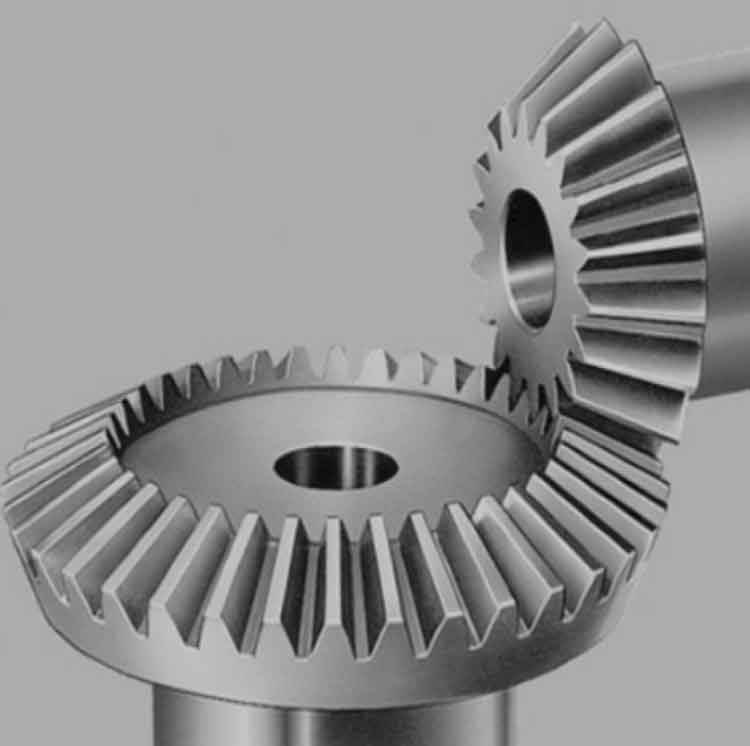
Straight bevel gears play a critical role in heavy machinery, where robustness, load distribution, and durability are paramount. Heavy machinery, such as construction equipment, mining machinery, and industrial machinery, operates under extreme loads and harsh conditions, necessitating reliable and durable gear systems. Straight bevel gears offer several advantages in these applications:
Load Distribution:
- Surface Area Contact: Straight bevel gears distribute loads over a larger tooth surface area compared to other gear types, providing better load-carrying capacity and reducing tooth stresses. This characteristic is especially advantageous in heavy machinery where high loads are common.
- High Load Capacity: Straight bevel gears are capable of handling substantial loads due to their robust design. They can transmit torque efficiently and withstand heavy axial and radial forces.
- Uniform Load Sharing: Properly designed straight bevel gears ensure uniform load sharing between gear teeth, minimizing localized stress concentrations and promoting even wear distribution.
Durability:
- Material Selection: Heavy machinery often requires gear materials with high strength and wear resistance. Proper material selection and heat treatment ensure that the gears can withstand the demanding operating conditions.
- Gear Quality: Precision manufacturing techniques and stringent quality control measures are essential for producing high-quality gears with excellent dimensional accuracy and surface finish. Superior gear quality contributes to enhanced durability.
- Surface Hardening: Heat treatment processes, such as carburizing and quenching, can be applied to strengthen the gear surface, making it more resistant to wear and improving overall durability.
- Lubrication: Proper lubrication is crucial for reducing friction, wear, and heat generation. Heavy machinery often incorporates advanced lubrication systems to ensure the gears are adequately lubricated during operation.
- Rigorous Testing: Heavy machinery gear systems undergo extensive testing and validation to assess their performance and durability under real-world conditions. Fatigue and endurance tests help identify potential issues and ensure the gears’ long-term reliability.
- Gear Tooth Filleting: Adding fillets to the gear tooth root reduces stress concentrations, enhancing the gear’s resistance to bending and fatigue failure.
Design Considerations:
- Gear Tooth Profile: The tooth profile design influences the gear’s efficiency, load-carrying capacity, and noise generation. Engineers may optimize the tooth profile to achieve the desired balance between performance and durability.
- Backlash Control: Managing backlash helps maintain accurate gear positioning, reduce wear, and ensure smooth gear engagement.
- Gearbox Design: Integrating straight bevel gears into the overall gearbox design involves considerations of shaft alignment, load distribution, and housing rigidity.
Maintenance: Regular maintenance and inspection are critical for heavy machinery to ensure that the gear systems remain in optimal condition. Monitoring gear wear, lubrication, and other performance parameters helps detect potential issues early and prevent catastrophic failures.
In summary, straight bevel gears are well-suited for heavy machinery applications due to their ability to distribute loads effectively and withstand extreme operating conditions. Careful material selection, precision manufacturing, and proper maintenance contribute to the gears’ durability, ensuring reliable performance in heavy machinery applications.
